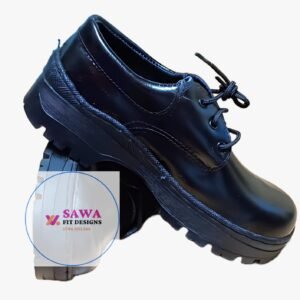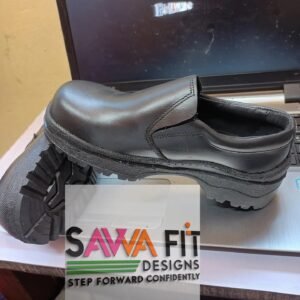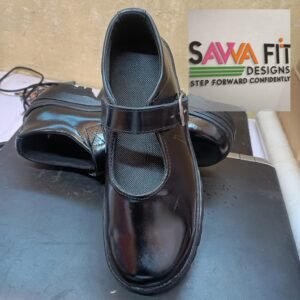African Leather Industry
-
Back to School Shoes -Genuine Pure Leather
Original price was: KSh1,300.KSh1,000Current price is: KSh1,000.Select options This product has multiple variants. The options may be chosen on the product pageClear3234242526272829303133 -
Boys Black School Shoes
Original price was: KSh1,500.KSh1,200Current price is: KSh1,200.Select options This product has multiple variants. The options may be chosen on the product pageClear363835373940 -
Slip-On School Shoes Boys
Original price was: KSh2,500.KSh2,000Current price is: KSh2,000.Select options This product has multiple variants. The options may be chosen on the product pageClear323436382728293031333537 -
Girls School Shoes (Buckle)
Original price was: KSh1,800.KSh1,400Current price is: KSh1,400.Select options This product has multiple variants. The options may be chosen on the product pageClear3837
The African Leather Industry: Opportunities and Challenges
The African leather industry is a significant sector with immense potential for growth and development. With Africa’s vast livestock resources, the continent is well-positioned to become a key player in the global leather market. This article explores the current state of the African leather industry, its challenges, opportunities, and future prospects.
Overview of the African Leather Industry
Africa is home to about 15% of the world’s cattle population and 25% of sheep and goats. Despite this abundance, Africa accounts for only 8% of global cattle hide production and 14% of goat and sheepskin production. The leather industry is crucial for many African economies, yet it remains largely unorganized, leading to underutilization of resources.
Key Players in the African Leather Industry
Several African countries have established themselves as notable players in the leather sector:
- Ethiopia: Home to Africa’s largest livestock population, Ethiopia has a developing leather industry. The country primarily exports semi-processed leather to nations like China, Thailand, the UK, and Italy. Despite its potential, Ethiopia’s export earnings from leather remain modest.
- South Africa: With a diverse and mature leather industry, South Africa has a history of leather processing and footwear manufacturing. However, the sector has faced challenges due to trade liberalization and competition from countries like China, India, and Brazil.
- Kenya: Kenya’s leather industry has natural strengths but risks missing out on opportunities in the expanding global market. The country has been working on strategies to enhance its leather sector’s competitiveness.
Challenges Facing the Industry
The African leather industry confronts several obstacles:
- Quality of Raw Materials: Poor flaying and preservation practices, along with inadequate collection infrastructure, affect the quality of hides and skins. This results in lower-quality leather products.
- Environmental Concerns: Traditional tanning methods can have harmful environmental impacts. Governments are enacting laws to promote sustainable practices, but implementation remains a challenge.
- Global Competition: The industry faces stiff competition from established global players, making it difficult for African producers to penetrate international markets.
- Investment Needs: There is a significant need for investment in technology and infrastructure.
- Regulatory Hurdles: Bureaucratic obstacles can delay business operations and discourage foreign investment.
Opportunities for Growth
The leather industry has several opportunities that could lead to substantial growth:
- Rising Global Demand: The global demand for leather products is increasing, with an estimated market value exceeding $50 billion annually.
- Sustainable Practices: There is a growing trend towards sustainable and ethical sourcing of materials, which African producers can capitalize on by promoting their eco-friendly practices.
- Technological Advancements: Investing in modern tanning technologies can improve product quality and efficiency.
- Regional Trade Agreements: Strengthening trade agreements within Africa can enhance market access for local producers.
The Role of International Partnerships
International partnerships play a crucial role in developing the leather industry. Countries like India are actively seeking collaborations with African tanneries to secure a steady supply of high-quality hides. These partnerships can provide technical assistance, investment, and access to new markets.
The Future of the African Leather Industry
The future looks promising for the leather industry if key challenges are addressed. By focusing on:
- Improving Quality Standards: Implementing strict quality control measures will enhance product competitiveness.
- Attracting Investment: Creating a favorable business environment will attract both local and foreign investments.
- Developing Skills: Training programs for workers can improve skills and productivity within the sector.
Conclusion
The leather industry holds significant promise as a source of employment and economic growth. By overcoming existing challenges and leveraging opportunities, Africa can position itself as a major player in the global leather market.
-
Back to School Shoes -Genuine Pure Leather
Original price was: KSh1,300.KSh1,000Current price is: KSh1,000.Select options This product has multiple variants. The options may be chosen on the product pageClear3234242526272829303133 -
Boys Black School Shoes
Original price was: KSh1,500.KSh1,200Current price is: KSh1,200.Select options This product has multiple variants. The options may be chosen on the product pageClear363835373940 -
Slip-On School Shoes Boys
Original price was: KSh2,500.KSh2,000Current price is: KSh2,000.Select options This product has multiple variants. The options may be chosen on the product pageClear323436382728293031333537 -
Girls School Shoes (Buckle)
Original price was: KSh1,800.KSh1,400Current price is: KSh1,400.Select options This product has multiple variants. The options may be chosen on the product pageClear3837
African Leather Industry



